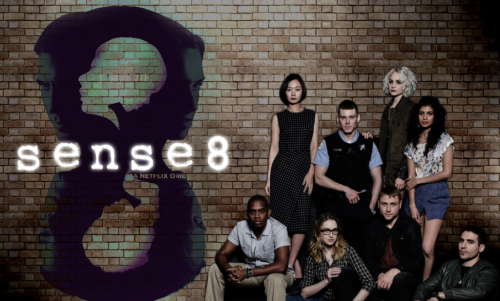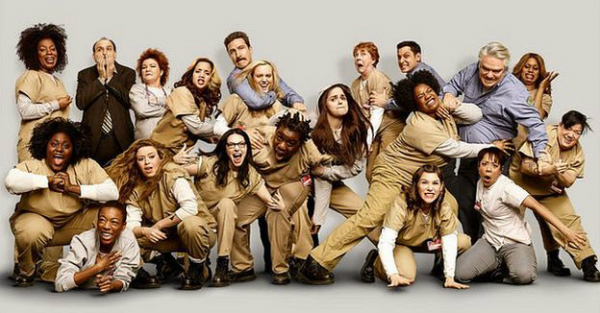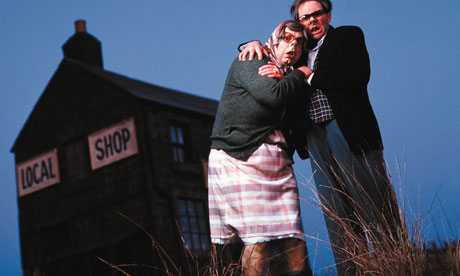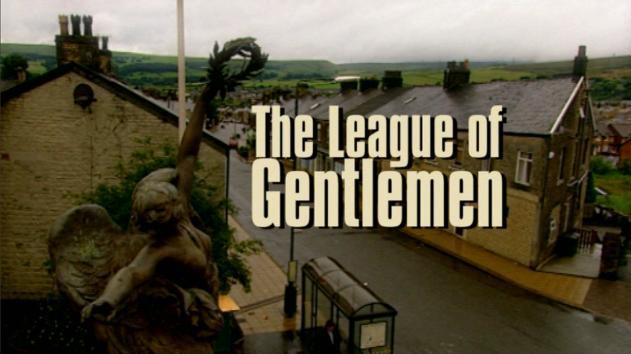This guest post written by Gabrielle Amato-Bailey appears as part of our theme week on Indigenous Women.
Kumu Hina is a 2014 documentary directed by Dean Hamer and Joe Wilson, which follows Hinaleimoana Wong-Kalu, a māhū (transgender) Native Hawaiian school teacher, through a year in her life. The documentary begins by introducing Halau Lokahi, the public charter school where Wong-Kalu teaches hula. This school is “dedicated to native Hawaiian culture, language, and history… subjects long prohibited in Hawai’i’s Americanized education system.” This is followed by a brief animated introduction during which Wong-Kalu, through voiceover, introduces viewers to the Hawaiian concept of māhū: “those born ‘in the middle’” “who embrace both feminine and masculine traits that are embodied within each and every one of us.”
Wong-Kalu explains that in pre-colonial Hawai’i, māhū people held honored positions in society as healers, keepers of sacred wisdom, and teachers. It is clear that Wong-Kalu sees honoring her own māhū identity and preserving Hawaiian culture as deeply intertwined. In her introduction, she clearly ties respect for māhū to the body of Hawaiian traditions. Western missionaries condemned māhū individuals at the same time they forbade hula and other cultural expressions. This queer identity is part of traditional Hawaiian culture; the identity cannot be claimed without connecting with the Hawaiian heritage, and that heritage cannot be fully honored without respecting the gender identity. Wong-Kalu recalls that in her youth she was often made fun of for being too feminine, but found refuge in her cultural identity. The strength that she drew from connecting with her heritage led her to her purpose to “spread the true meaning of aloha.” Connecting with her Hawaiian heritage gave her the strength to be true to her gender identity, and being true to her gender identity seems to have led her to the traditional role of a māhū as a teacher. The documentary really illustrates this close connection by weaving together stories of Wong-Kalu’s personal and professional life. We follow her as she prepares her students for their end of year hula recital, and as she begins married life with her husband, Hema Kalu.
Wong-Kalu is the hula teacher at Halau Lokahi, and it is she who teaches students of all ages the traditional songs and dances of Hawai’i. The documentary focuses particularly on her high school age boys as they struggle to fully commit to their performance. Early on, we see Wong-Kalu demonstrate the chant to her students and how they imitate her very timidly, seemingly afraid to look silly. She demonstrates again, first telling them, “There’s nothing wahine about my voice.” Although Wong-Kalu later discusses her concerns about how her identity may impact her social life, she uses her māhū identity and gender fluidity to serve her students.
There is another reason that the documentary focuses on this particular group of students. A middle school student, Ho’onani Kamai, who is also a māhū person, has asked if she can be part of the high school boy’s performance. Wong-Kalu is originally hesitant to allow it because of possible backlash from parents, but considers it her job to nurture her students, not force them into gender identities or gender roles. Her presence ends up being to the benefit of the male students because Kamai is fully committed to the performance. Wong-Kalu describes her to the other students as someone who embodies Ku, or male energy. Wong-Kalu even plays to adolescent male pride, asking her male students if they’ll let themselves be outdone by a younger female student. In an interview, Kamai suggests that the high school boys struggle partly because they’re afraid to look foolish and partly because they think they don’t have to try very hard.
Kamai’s dedication and commitment pay off when, at the end of year recital, she is the one to lead the high school boys’ chant. Towards the end of the documentary, we see this group of students meeting again after their performance, and the boys all praise and thank Kamai for being a leader and teacher.
Throughout Wong-Kalu and Kamai’s journey together working on this performance piece, the documentary reveals to us how these two māhū individuals are received by their community. Other students at Halau Lokahi are quite comfortable with the māhū identity. Kamai is accepted by her peers and has friends, and the documentary even shows some of her classmates explaining what it means when someone is māhū. This broad acceptance from the students is obviously the result of the environment of respect and cultural pride that the school staff fosters in their students. During morning assembly, Principal Laara Allbrett reminds the students the importance of respecting their teachers by giving their full effort to their lessons, especially because her generation and those before were prevented from learning about their heritage as a colonized people. This sentiment is echoed by Kamai’s mother, for whom it is very important to see her children get the type of education she could not have, and she is comfortable with Kamai expressing her māhū identity. It is evident that Wong-Kalu’s philosophy that respecting the māhū identity is part of respecting and expressing traditional Hawaiian culture is shared by her community.
The final word on Wong-Kalu’s mentorship of Kamai comes before the end of year recital. Wong-Kalu takes her student aside and lets her know that as long as she’s in this supportive environment, she can express her māhū identity freely, but that this might not be the case everywhere. Wong-Kalu cautions Kamai that as a child she may have to go along with other’s expectations. She explains that, as an adult and someone who is confident in her identity, she doesn’t move for anyone at this point in her life, and that Kamai will also reach that point in her own life.
Running parallel to this story of the mentoring relationship is the story of Wong-Kalu’s relationship with her husband, Hema Kalu. Kalu is a Tongan man from Fiji, and the documentary picks up when his visa has finally come through and he can move to the U.S. Wong-Kalu describes her husband as a “full-on bush man,” and Kalu says of his life in Fiji that he was “poor but free.” In contrast to Wong-Kalu’s experience of Hawaiian tradition being supportive of the māhū identiy, Kalu describes Fiji as more conservative. He admits that at first he was hesitant to get involved with a māhū person because he was afraid of how his friends would perceive him. Wong-Kalu also expresses anxieties about “passing” (a controversial and problematic term to many trans women as it implies that there is a specific way women should look and behave, although for many trans people it is “rooted in a desire for safety“) for Kalu’s friends. They are both very protective of one another in the face of possible discrimination.
Conflict arises in the relationship between Wong-Kalu and Kalu for the same reasons as in any other relationship: expectations. On the one hand, Kalu seems to still have fairly traditional gender expectations for his marriage. He is extremely jealous and doesn’t want his wife to have any male friends. On the other hand, he struggles to adapt to more urbanized life in Hawai’i, and Wong-Kalu becomes extremely frustrated with him because of the time it takes him to adjust. Part of the conflict also seems to come from their age difference. Kalu is in his early 20s, while Wong-Kalu reaches her 40th birthday during the filming of the documentary. Some of Kalu’s behavior comes off as deeply immature and selfish. When Wong-Kalu invites him to attend her students’ mid-year concert, he takes a call on his cell during the performance and then rushes to leave to spend time with his friends. He also calls and interrupts Wong-Kalu several times during one of her classes. Kalu doesn’t seem to understand how important his wife’s work is to her.
Wong-Kalu discusses her concerns about being in a relationship at all, and whether she as a māhū person is maybe willing to put up with more conflict or disrespect in order to not be alone. At the same time, there is an obvious affection between her and Kalu. Towards the end of the documentary, he presents her with a birthday cake and gifts, singing “Happy Birthday.” Wong-Kalu expresses that, however things might turn out for her marriage, she is grateful to live in a place that allows her to be herself and love who she loves.
Kumu Hina is a portrait of one activist working to preserve Native rights, culture, and dignity in a time when Native Sovereignty is being made more visible by events like the efforts of Water Protectors to stop the Dakota Access Pipeline. Wong-Kalu is a cultural advocate, a teacher, and the chairperson of the Oahu Burial Council. She draws a direct and explicit link between honoring her māhū identity and helping her people preserve their culture. Like the māhū of generations past, Wong-Kalu has taken on the responsibility of sharing sacred knowledge with the next generation. She wants to share with her students the true meaning of aloha which, to her, means giving them unconditional acceptance and respect.
Gabrielle Amato-Bailey is just starting out as a freelance writer. In between paying gigs she writes about feminism, pop culture, and social justice.




































